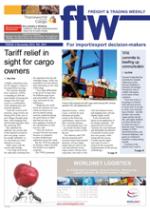In line with its mission to
improve efficiency and
help reduce logistics costs,
software provider ShipShape
recently launched an
electronic airwaybill enabling
forwarders to submit
information electronically
to the airlines in the same
way as they EDI their bills of
entry to Customs.
“This results in significant
cost savings for the client
since the airline generally
waives the cost for manual
capture or reduces it
significantly,” says ShipShape
general manager and system
architect J-L Koekemoer.
“Technically this has
been possible for some
time, but in South Africa
the concept has not been
widely embraced,” he said.
“Apart from the time-saving,
there’s a big benefit in terms
of accuracy, with many
countries demanding advance
notification of cargo on board
for security reasons.”
There are also downstream
benefits of electronic
submission in terms of the
tracking information that is
pushed through to the client,
says Koekemoer.
“The airlines will send
back in real time the
scheduled, estimated and
actual departure of the
aircraft, the number of pieces
handed to the airline, what
is loaded and if cargo is
bumped off the flight.
“This is information that
was previously followed up
manually or through a link to
the website. It’s now pushed
through automatically, which
is a big advantage for the
forwarder and his client.”
And according to
Koekemoer, it’s been highly
beneficial for consolidators
who handle high volumes of
shipments.
ShipShape has been
involved in several other
functional upgrades in recent
months, notably a far superior
delay notification.
“It was motivated by
almost two weeks of
unforeseen delays related
to Sars and Telkom issues
last month. As a result
we built in an additional
number of automated
monitoring processes to
provide customers with
earlier notification of delays
based on the premise that the
sooner you are aware of a
problem the sooner you can
introduce interventions.”
One of the next big
things on the Customs
Modernisation agenda –
and one which Koekemoer
believes will bring huge
benefits to service providers
and their customers – is
the new tariff management
system (TMS), effectively
a revision of the old tariff
book.
“The intention is that it
will allow us to get more data
out of the tariff book – from
VAT indicators to permit
requirements and additional
statistical codes which we
have historically had to
source from disparate sources
and combine in our systems.
“It’s a development that
will impact positively for all
concerned.”
And after what Koekemoer
describes as a year of steady
growth for the company, he’s
optimistic about more of the
same for the year ahead.
CAPTION
J-L Koekemoer … ‘a year of
steady growth.

